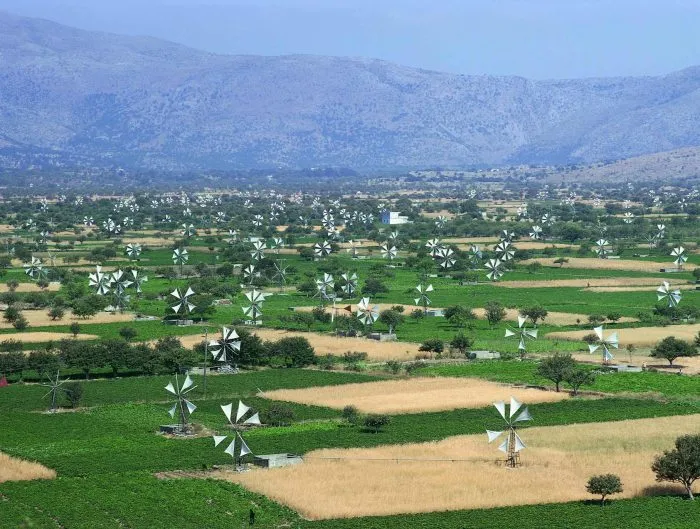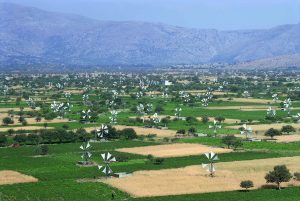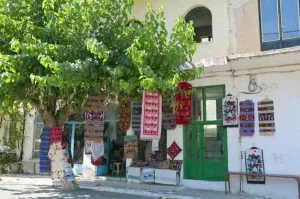Embark on a journey to Crete, an island where time stands still amidst the whispers of history and the rustle of carob leaves. This tale is not just a travel guide; is a guide to healthy eating and longevity. Join me as I recount my adventures on this enchanting island, discovering the hidden gems of the Cretan diet, be it the nutritious carobs, the honey, the oil, the herbs.
The Enigmatic Cretan Carob
Picture a land where rugged landscapes embrace centuries-old carob trees, their branches heavy with rich, dark pods. My journey began with exploring these majestic trees, flourishing in Crete’s arid terrain. I first tasted carobs as a biscuit on my breakfast in the Legacy Gastro Suites. I asked and learned that carobs are not just plants but the food that took on to raise the children of Crete in periods of history when food was not a given for every family. The carob tree, or ‘harupya’ as known locally, is a beacon of resilience, thriving in challenging soils and found in almost every region of Crete.
Delving into the history of health
The carob has a storied history on this island. I was fascinated to discover that the Ancient Greeks called it the Egyptian Fig, and it was a staple in the diets of Ancient Egyptians and Romans. The founder of Creta Carob, Elias Manousakas, refers to it as “the lost treasure of Crete”. A health treasure indeed!
Regarding the nutritional value of carob, it is mainly rich in carbohydrates (glucose and sucrose), so it can give us energy immediately, but also rich in proteins as 100g contain 5-8g of protein. It contains almost no fat (0.2-0.6%) and is very rich in fiber. It is very easy to digest and does not contain gluten, so it is also suitable for people suffering from celiac disease. In addition, it contains vitamin A, vitamins of the B complex and trace elements such as potassium, phosphorus, calcium, magnesium, iron, zinc, manganese and copper.
The plant fibers contained in carob help to prevent constipation and the smooth functioning of the intestine. It can also act as an antidiarrheal medicine even in infants. In addition, studies have shown that it helps to reduce “bad” (LDL) cholesterol and make the heart work better. It has also been shown to help reduce triglycerides in women. The carob fruit also contains polyphenols, antioxidant components that help prevent cancer and hyperlipidemia.
That is why Cretans are so deeply connected with their land.
A Healthful Bounty
Traversing through the local farms, I marveled at the diverse array of carob products. From nutritious powders and syrups to delicious pastries and beverages, each product was a testament to the carob’s versatility and health benefits. I was particularly intrigued by the carob’s rich nutritional profile, offering a caffeine-free alternative to cocoa and coffee, but also an alternative to honey for diabetics, to wheat, and brimming with vitamins and minerals.
Sustainable Practices and Organic Wonders
Creta Carob, a family-run business, stood out as a beacon of organic and sustainable agriculture. Here, ancient practices harmoniously blend with modern technologies, producing organic carob products that align with EU standards. Witnessing the entire process, from tree to product, was a revelation of dedication and respect for nature.
Culinary Delights and Local Flavors
My culinary experiences in Crete were deeply enriched by the flavors of carob. Whether it was savoring the unique taste of carob tea, indulging in carob-based sweets, or experimenting with carob flour in traditional recipes, each meal was a celebration of Crete’s culinary heritage. I found myself enjoying every single carob product; carob honey, carob rusks, carob pudding & biscuits, coffee, nutrition bars, breadsticks, spaghetti, carob pectin, and even anti-aging creams and beauty products.
Embracing the Spirit of Crete
As I wandered through the picturesque landscapes, I couldn’t help but be captivated by the spirit of Crete. The warmth of the people comes from their gratitude for living on fertile soil and ideal climate. Such gratitude makes them want to develop and evolve their products and hence their quality of life. Develop the land treasures with the means of technology. The carob tree, a symbol of endurance and adaptability, seemed to embody the very essence of this incredible island.
Final Thoughts on the Cretan Carob Trail: A Journey to Remember
This voyage through Crete, tracing the path of the humble carob, was more than just a trip; it was an immersion into a culture where tradition and innovation coexist. The carob’s journey from an ancient staple to a modern superfood mirrors Crete’s own transformation while maintaining its soul. I left Crete with a heart full of memories, a newfound appreciation for the carob, and a longing to return to this land where history, culture, and nature intertwine so beautifully.








































Leave A Reply